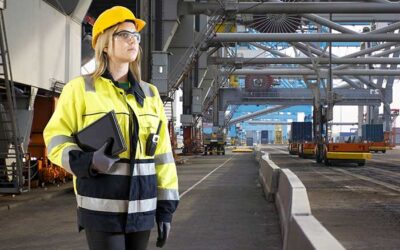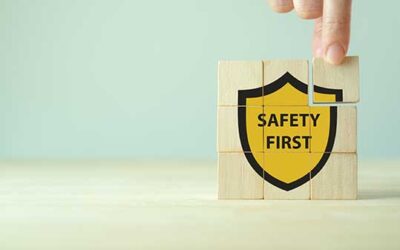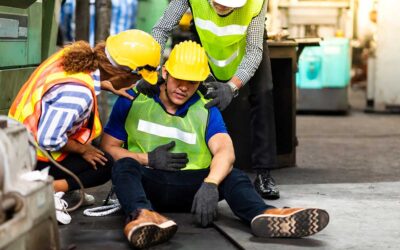Laying the Groundwork: HR’s Dual Influence on Safety
HR plays a pivotal role in shaping the safety culture in the intricate web of workplace dynamics. Their influence is twofold: direct and indirect. Directly, HR is at the helm of implementing safety training, ensuring that behaviors align with safety protocols, and making pivotal hiring decisions that can influence the overall safety culture. Indirectly, HR becomes the bridge when incidents occur, helping injured employees transition back into their roles and addressing the ripple effects of safety incidents, such as high turnover. Moreover, in an age where company reputation is paramount, HR must grapple with the external perceptions of a company’s safety record, which can significantly impact talent acquisition and retention.
Safety Starts at Hello: Setting the Tone from Recruitment
Every employee’s journey begins with the recruitment process, and it is here that HR can set the tone for safety. By emphasizing the company’s commitment to safety during interviews, job orientations, and onboarding processes, HR ensures that new hires are not only aware of the company’s safety protocols but also understand their importance. This early introduction to the company’s safety culture ensures that employees recognize safety as a core value from day one.
In addition to emphasizing safety during the recruitment process, HR can also take steps to create a safe and healthy work environment. This includes providing employees with the necessary training and equipment, conducting regular safety inspections, and investigating accidents and near misses. By taking these steps, HR can help to create a workplace where employees feel safe and can focus on their work.
A safe and healthy work environment is essential for both employees and employers. Employees who feel safe are more likely to be productive and satisfied with their jobs. Employers who create a safe and healthy work environment are less likely to experience accidents and injuries, which can save money and improve morale.
By emphasizing safety during the recruitment process and creating a safe and healthy work environment, HR can help protect employees and improve the bottom line.
The Blueprint of Safety: Documenting for Compliance and Clarity
Documentation is the foundation of any effective safety program. From written policies and standard operating procedures to risk assessments, HR is critical in ensuring that safety protocols are documented and easily accessible to all employees. These documents serve a dual purpose: they provide clear guidelines for employees to follow and act as a compliance record for regulatory bodies. Given the myriad safety regulations, HR must stay current and ensure that all documentation aligns with current laws and best practices.
In addition to the above, documentation can also be used to:
- Track safety performance over time
- Identify areas where improvements are needed
- Communicate safety information to employees
- Provide evidence of compliance with regulatory requirements
- Protect employees from liability in the event of an accident
By keeping accurate and up-to-date documentation, HR can help to ensure a safe and healthy workplace for all employees.
Training Beyond the Manual: Engaging and Educative Approaches
Written policies are important, but they are not enough to ensure safety in the workplace. Effective training is essential to bring these policies to life and help employees understand and follow them. HR’s role in this process is critical. They must create engaging training programs that resonate with employees and ensure that they internalize safety protocols. This can be done through various methods, such as hands-on training, interactive workshops, or digital modules. The important thing is that the training is comprehensive and compelling and provides employees with the practical knowledge and skills they need to stay safe on the job.
Here are some additional tips for creating effective safety training programs:
- Make sure the training is tailored to the specific needs of your employees.
- Use a variety of teaching methods to keep employees engaged.
- Provide opportunities for employees to practice what they have learned.
- Evaluate the effectiveness of your training program and make changes as needed.
Risk Radar: Proactive Monitoring for a Safer Workplace
Risk tracking is more than just a reactive measure; it’s about proactively identifying and addressing potential hazards before they escalate. While traditionally the domain of health and safety professionals, HR’s involvement is crucial. HR acts as the linchpin, from coordinating risk assessments and safety audits to compiling comprehensive safety reports, ensuring seamless communication between departments. Their role extends to issuing timely safety alerts ensuring that employees are always informed about potential risks.
Reinforcing the Right Moves: Cultivating a Safety-first Mindset
Safety isn’t just about protocols; it’s about behavior. HR is pivotal in ensuring that safety behaviors are encouraged and reinforced. This starts with new hires, ensuring they receive comprehensive safety training. But it doesn’t end there. Periodic retraining ensures that employees stay updated with the latest safety protocols. Moreover, HR can leverage tools like performance reviews to reinforce safety behaviors, rewarding employees who consistently prioritize safety and providing corrective feedback to those who don’t.
The Bigger Picture: HR’s Expanding Role in Holistic Employee Well-being
Safety is just one facet of an employee’s overall well-being. In today’s holistic approach to HR, the lines between safety, mental health, work-life balance, and overall health are increasingly blurred. HR professionals must recognize the interconnectedness of these facets. For instance, an overworked employee is likelier to make safety errors due to fatigue. By addressing the root cause, HR enhances the employee’s well-being and mitigates safety risks.
Shared Responsibility: Fostering a Collective Commitment to Safety
Safety is not the sole responsibility of HR or the health and safety department. It is a collective commitment that everyone in the company should take ownership of. HR’s role is to foster a culture where everyone, regardless of their role or seniority, takes ownership of safety. This collective approach enhances compliance and ensures that safety becomes second nature, ingrained in the very fabric of the company’s culture.
There are many ways that HR can foster a culture of safety. One way is to provide training on safety procedures and protocols. Another way is to create a system for employees to report safety concerns. HR can also create a safety culture by modeling safe behavior themselves and rewarding employees who demonstrate safe behavior.
A safety culture is essential for any company that wants to create a safe and healthy workplace. By taking a collective approach to safety, companies can create a culture where everyone is responsible for safety and where safety is always a top priority.
Here are some additional benefits of a culture of safety:
- Reduced accidents and injuries
- Improved employee morale
- Increased productivity
- Reduced costs associated with accidents and injuries
- Improved brand reputation
Safety and Beyond: HR’s Evolving Role in the Modern Workplace
The modern workplace is dynamic, continually evolving in response to technological advancements, societal shifts, and regulatory changes. As gatekeepers of workplace culture, HR professionals must stay agile, adapting to these changes while ensuring safety remains a top priority. Whether integrating new safety technologies, addressing the unique challenges of remote work, or navigating the complexities of global operations, HR’s role in safety is more critical than ever.
HR at the Heart of Workplace Safety
Workplace safety is more than just a regulatory requirement; it’s a testament to a company’s commitment to its employees. As custodians of workplace culture, HR professionals play a pivotal role in shaping and sustaining this commitment. By championing safety, HR protects employees from harm and creates a more positive and productive work environment.
Here are some specific ways that HR can champion workplace safety:
- Conduct regular safety audits and inspections.
- Develop and implement safety training programs.
- Provide employees with the resources to stay safe, such as personal protective equipment and safety gear.
- Encourage employees to report safety hazards and concerns.
- Investigate all accidents and incidents to identify root causes and prevent future occurrences.
- Promote a culture of safety throughout the organization.
By taking these steps, HR can help to create a safe and healthy workplace for all employees.




